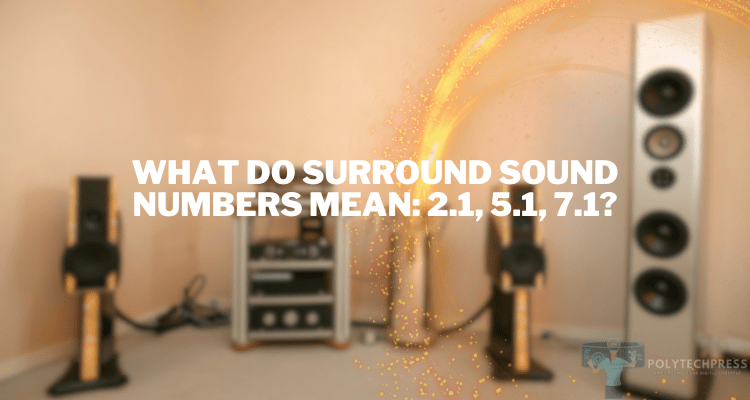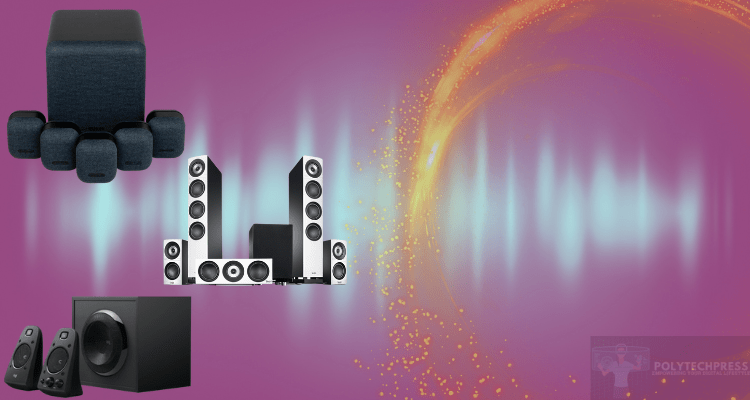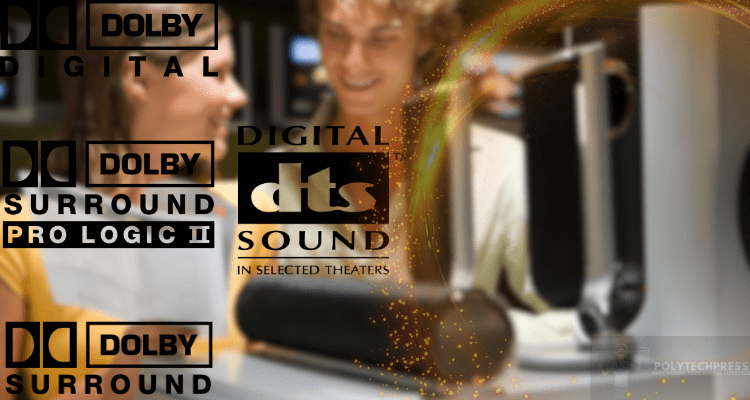What Do Surround Sound Numbers Mean: 2.1, 5.1, 7.1?
Surround sound numbers denote the configuration of speakers and subwoofers in a home audio system.
The first number represents the quantity of full-range satellite speakers that reproduce mids and highs – for instance, the 5 in a typical 5.1 surround sound setup.
These speakers consist of front left, front right, center, and left and right rear surround channels. The second number indicates how many subwoofers are present to handle low bass frequencies only.
So the .1 in 5.1 corresponds to 1 subwoofer focused solely on delivering deep, room-shaking bass. Together, these differentiated speakers work in concert to encapsulate the listener in multidimensional sound for immersive movie, music, and gaming experiences.
Choosing the Right Surround Sound System

Choosing the right surround sound system involves careful consideration of several factors. Firstly, assess the room size and acoustics, as larger rooms may require more powerful speakers to fill the space effectively.
Smaller rooms might benefit from a simpler setup like a 5.1 configuration, whereas larger spaces can accommodate 7.1 or more expansive systems.
The listener’s primary use — whether for movies, music, or gaming — also influences the choice, as certain systems are tailored for specific audio experiences. Additionally, consider the system’s compatibility with existing devices and the ease of installation.
For varied environments, a modular system that allows for gradual upgrades could be ideal, offering flexibility and scalability.
What Is the Difference in Surround Sound Numbers Mean?

Surround sound systems utilize a numerical format such as 2.1, 5.1, or 7.1 to denote the number of speakers and subwoofers.
The first number tells you how many full-range loudspeakers are present to handle mids and highs. The second number indicates how many subwoofers are dedicated to bass frequencies only.
| 2.1 | There are two satellite speakers (left and right) plus one subwoofer for lows. |
| 5.1 | Setup adds a center channel for enhanced dialogue and two surround speakers to create more enveloping audio. |
| 7.1 | configuration builds on 5.1 by augmenting it with two additional speakers located directly behind the listening position. This provides an even more lifelike and immersive 360-degree soundstage. |
Decoding the Latest in Immersive Audio Technologies

Immersive audio formats aim to transport listeners inside spectacular multidimensional soundscapes. New technologies build upon the groundbreaking innovations of past surround sound systems to further enhance our entertainment experiences.
Dolby Surround ushered in consumer surround sound by extracting and steering audio to multiple speakers from stereo soundtracks with remarkable accuracy using analog matrix decoding.
Dolby Pro Logic advanced analog surround technology by implementing superior steering logic on top of the Dolby Surround system, resulting in better channel separation.
The advent of digital surround sound began with Dolby Digital, which transformed the format by capturing and transmitting discrete 5.1 channel audio and associated metadata.
As a leading competitor to Dolby, DTS employs less compression for higher bitrate audio on DVD and Blu-ray discs for premium multi-channel sound quality demanded by discerning home theater owners.
Wrap Up
In summary, comprehending surround sound numbers is key to choosing the right audio system.
These numbers signify the count of speakers and subwoofers, crucial for an immersive sound experience in home theaters, music, or gaming.
Consider room size, acoustics, and usage purpose when selecting a system. A suitable surround sound setup can vastly improve your audio experience, creating a rich, layered soundscape for movies, music, and games.






